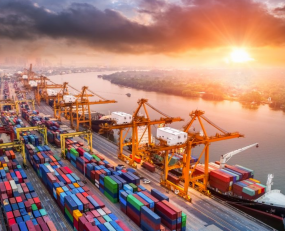
The headlines are screaming about “explosions” in freight rates exacerbated by shortages of containers and port space. Certainly, there does seem to be a continuing imbalance between demand and supply, and this is driving up prices.
The Shanghai Export Container Freight Index is showing double-digit percentage rises in rates, up from $1,500 a couple of weeks ago to over $1,800 this week. Pacific routes, in particular, are driving up the overall number, although China-Europe routes are catching up.
However, it is important to remember that the Shanghai Index is measuring short and spot markets. The dynamics of the longer-term contract market may be different. Indeed, looking at the numbers from Hapag-Lloyd’s third-quarter results gives another impression. The Hamburg based carrier says that quarter-on-quarter its rates are down by 2.7%, with Latin America route seeing a fall of 8.3%. That said, year-on-year for Q3, rates are up by 8.8% for Trans-Pacific and 5.6% for Asia-Europe.
All of this is in the face of a year-on-year fall in the number of containers carried of 3.4% for Q3, with the transpacific route seeing a 6.8% fall. This is slightly surprising.
As has been the case through much of this year, pricing is being affected by the ability of shipping lines to restrict capacity, combined with issues around congestion. The latter is certainly a problem. There are widespread complaints about a shortage of containers and Hapag Lloyd describes it as a ‘black swan’ event where the company is “experiencing the strongest increase in 40-foot demand following one of the strongest decreases in demand ever. Both happening within just six months. Almost three out of four containers in our 40-foot fleet are currently deployed in Customer Shipments and are therefore not available for the time being.”
It might be suggested, therefore, that rather than simply being an issue of demand and supply, the short-term price increases and shortages are also being driven by geographical imbalances in demand leading to a ‘whiplash effect’. This was seen in the earlier part of the year as volumes crashed and is being continued as demand recovers more aggressively. This is, by its nature a short-term problem, but it might be one that is harder to solve than just throwing more ships or containers at it.
Source: Transport Intelligence, November 17, 2020.
Author: Thomas Cullen